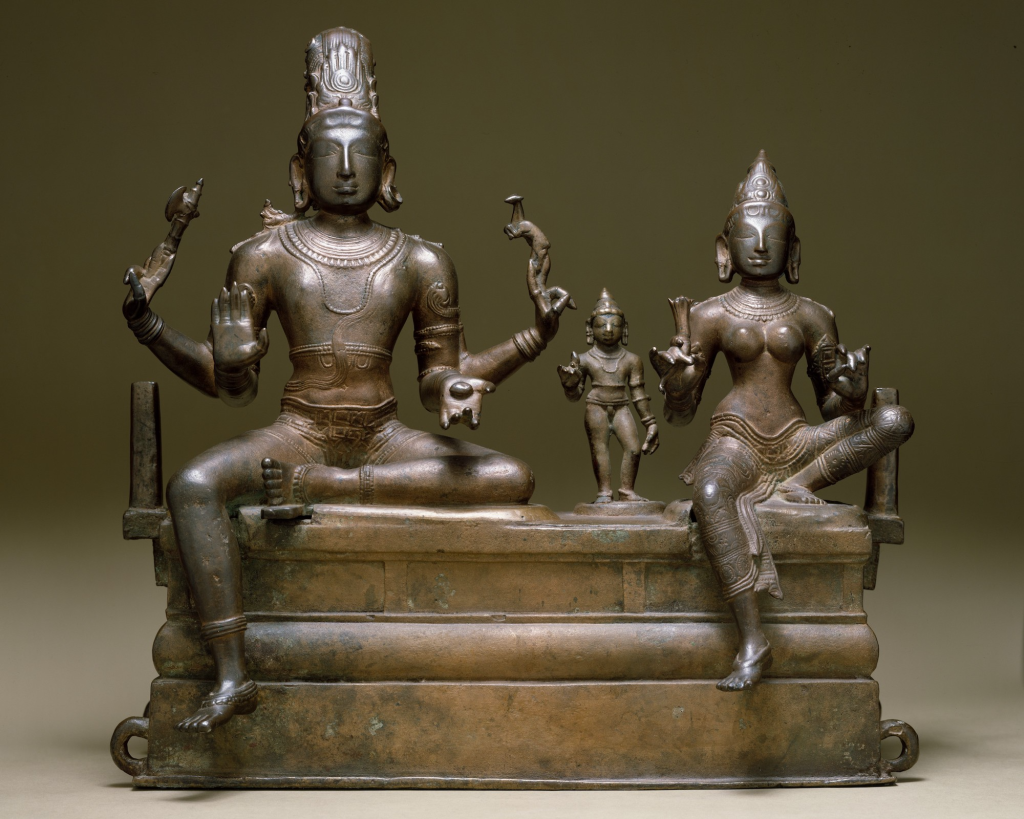Introduction
Somaskanda Murthy, a significant and enigmatic deity in Hinduism, stands at the crossroads of divinity, symbolising the intricate matrix of life, spirituality, and cosmic unity. Within the sacred embrace of this divine triad lies a profound representation of the cosmic order, where Lord Shiva, Goddess Parvati, and their illustrious son, Lord Skanda, seamlessly merge into a single, harmonious form. As we embark on an exploration of Somaskanda Murthy, we venture into the heart of Hindu mythology and spirituality, unraveling the historical significance, iconography, philosophical underpinnings, and enduring cultural impact of this sacred manifestation. In this essay, we will explore deeper into the mysteries and revelations of Somaskanda Murthy, shedding light on its multifaceted significance within the rich tradition of Hindu religious and cultural traditions.
Historical Background
The concept of Somaskanda Murthy finds its roots in ancient Indian mythology and Hindu religious traditions. While there is no precise historical documentation pinpointing its origin, it can be traced back to the early texts of Hinduism, including the Puranas and the Agamas. The amalgamation of Shiva, Parvati, and Skanda into one divine form highlights the integration of diverse elements within the religion.
Significance and Symbolism
- Unity of the Divine: Somaskanda Murthy is a visual representation of the unity of the divine. Lord Shiva is the destroyer and regenerator, Goddess Parvati represents the nurturing and protective aspect, and Lord Skanda is the embodiment of wisdom and valour. Together, they represent the harmonious balance of opposing forces in the universe.
- Family and Parenthood: This divine form also emphasises the importance of family and parenthood in Hinduism. It portrays Lord Shiva and Goddess Parvati as loving parents, nurturing their child, Lord Skanda. This symbolism underscores the ideals of family values, responsibility, and care within the Hindu society.
Iconography
The iconography of Somaskanda Murthy is rich in symbolism, and each element contributes to its profound significance.
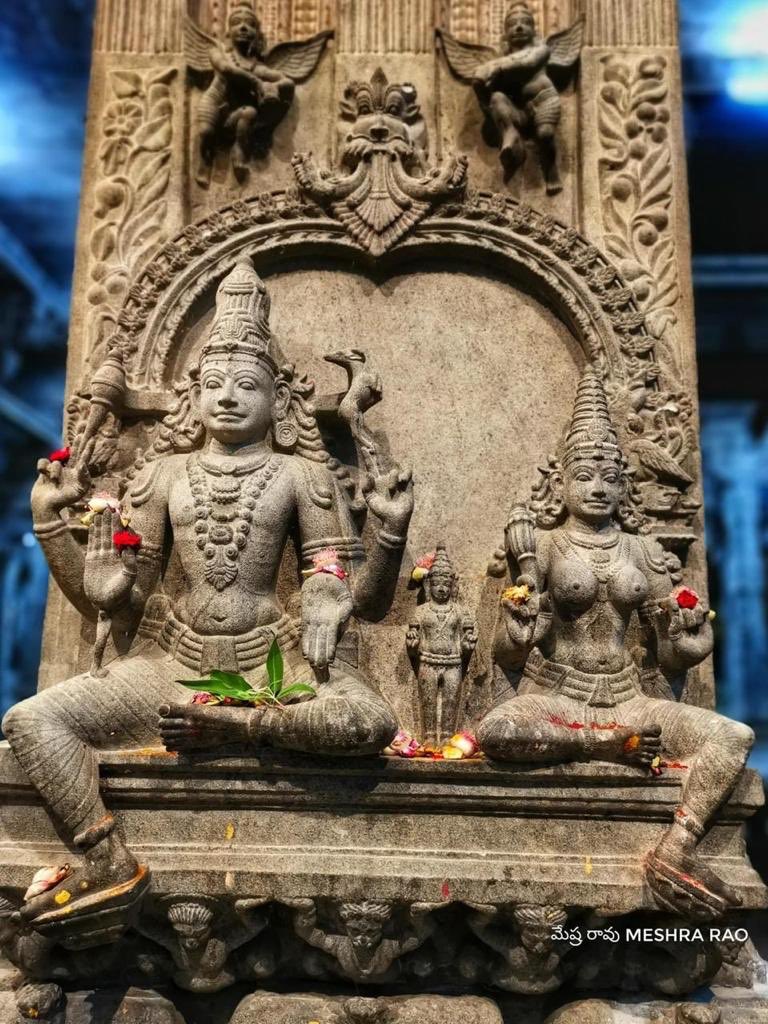
- Lord Shiva: He is depicted with ash smeared on his body, a serpent coiled around his neck, and a third eye on his forehead. His blue throat, a result of consuming the poison during the churning of the ocean (Samudra Manthan), is also visible. These attributes symbolise his role as the destroyer of evil and his ascetic nature.
- Goddess Parvati: She is usually portrayed with two arms, holding Lord Skanda on her lap. Her serene and motherly appearance represents her nurturing and protective aspect as the Divine Mother.
- Lord Skanda: Skanda, also known as Kartikeya, is depicted as a young boy or a youth, sitting on the lap of Parvati. He is often shown holding a spear or a vel (spear-like weapon) in his hand, symbolising his valour and wisdom.
- Sacred Bull: Nandi, Lord Shiva’s loyal bull, is often depicted near the divine family, emphasising the close association between Shiva and his divine vehicle.
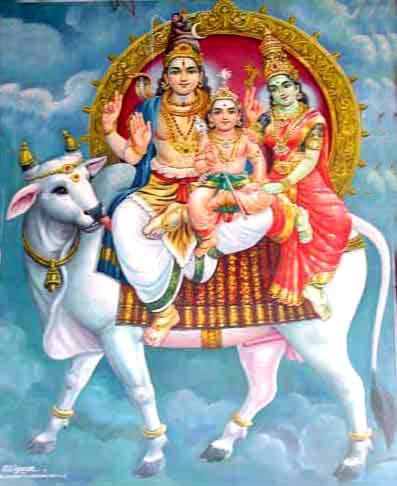
Philosophical Significance
Somaskanda Murthy holds profound philosophical importance within Hinduism:
- Advaita Vedanta: The concept of unity within diversity is central to the Advaita Vedanta philosophy, which teaches that all apparent differences in the world are ultimately illusions, and everything is interconnected in the ultimate reality, Brahman. Somaskanda Murthy symbolises this non-dualistic philosophy by harmonizing the distinct aspects of the divine into one form.
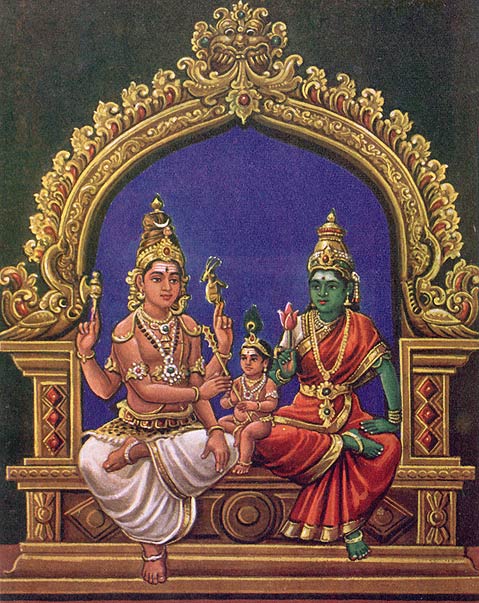
The Iconography of Somaskanda Murti. Courtesy: Murugan Bhakti Family Values: The divine family represented by Somaskanda Murthy promotes the importance of family, love, and responsibility in Hindu society. It serves as a model for individuals and communities to emulate in their daily lives.
Worship and Rituals
Devotees worldwide engage in various worship practices and rituals to honor Somaskanda Murthy:
- Temples: A multitude of temples dedicated to Somaskanda Murthy exist across India and beyond. These temples serve as focal points for devotion, attracting pilgrims and seekers. Worshipers offer prayers, perform abhishekams (ritual bathing of the deity), and partake in festivals to express their reverence.
- Festivals: Prominent festivals celebrate the divine family represented by Somaskanda Murthy. Thaipusam, primarily observed in South India and Southeast Asia, stands out. Devotees during Thaipusam undertake elaborate processions and rituals to seek Lord Muruga’s (Skanda) blessings.
- Mantras and Bhajans: Devotees recite mantras and sing bhajans (devotional songs) dedicated to Somaskanda Murthy. The repetition of these sacred verses and songs deepens the spiritual connection between the worshiper and the deity.
- Offerings: In temples and during home worship, offerings such as fruits, flowers, coconuts, and milk symbolise devotion and surrender to the divine.
Where one can see Somaskanda Murthy?
Somaskanda Murthy can be seen in various Hindu temples and sacred sites, primarily in regions where the worship of Lord Shiva and his family, including Goddess Parvati and Lord Skanda (Kartikeya), is prevalent. Here are some notable places where you can find representations of Somaskanda Murthy:
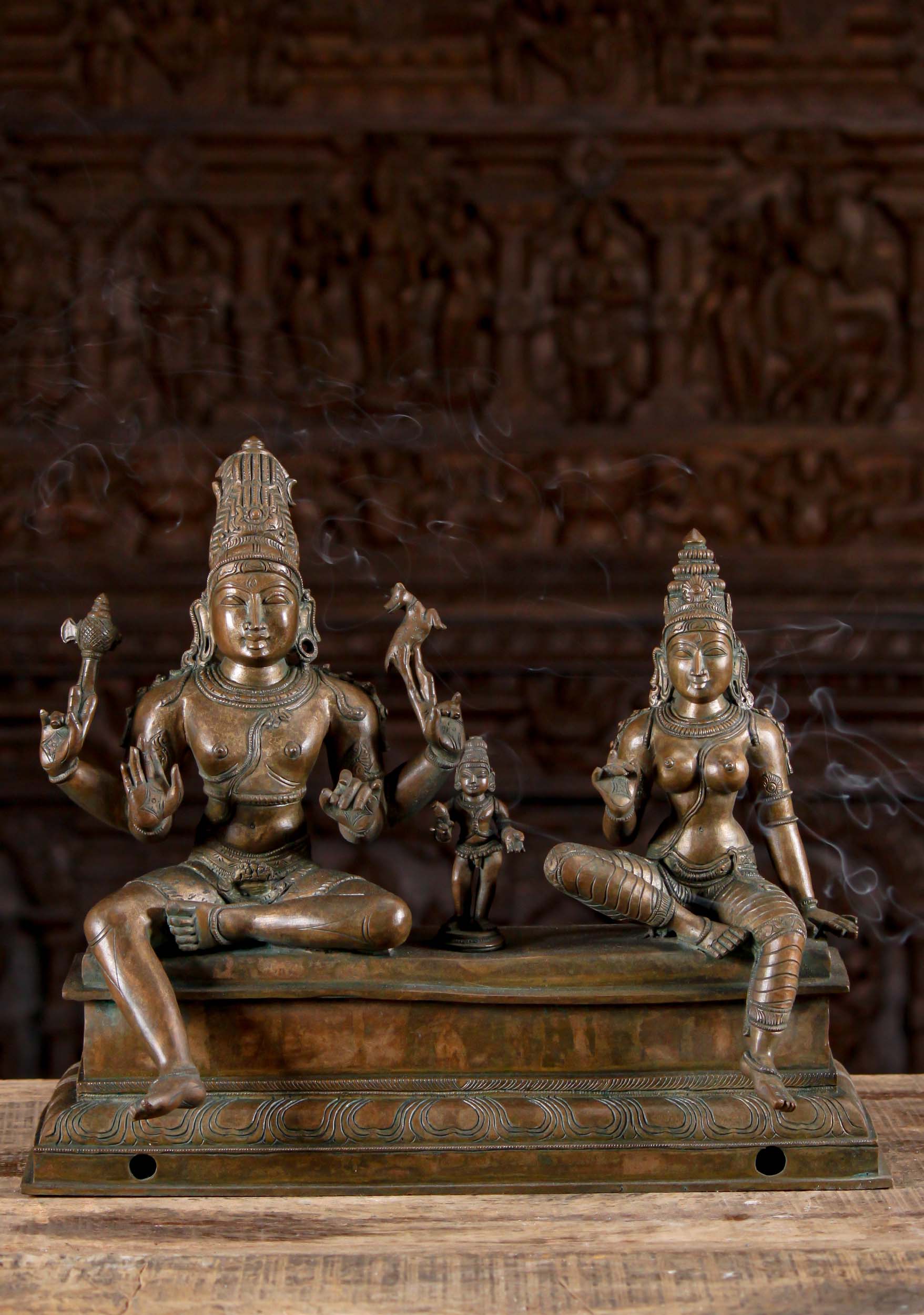
Tamil Nadu, India: Tamil Nadu, in South India, is home to numerous temples dedicated to Lord Shiva, where you can often find depictions of Somaskanda Murthy. Prominent temples like the Meenakshi Temple in Madurai, Arunachaleswarar Temple in Tiruvannamalai, and Brihadeeswarar Temple in Thanjavur are known for their elaborate representations of this divine form.
- Kerala, India: Kerala, another southern Indian state, has several Shiva temples with beautiful depictions of Somaskanda Murthy. The Ettumanoor Mahadeva Temple and the Vaikom Mahadeva Temple are examples of such places.
- Sri Lanka: Given its strong Hindu presence, Sri Lanka is home to temples where Somaskanda Murthy is worshiped. The Koneswaram Temple in Trincomalee and the Nallur Kandaswamy Kovil in Jaffna are notable sites.
- Southeast Asia: The worship of Lord Muruga (Skanda) and Somaskanda Murthy is prevalent in Southeast Asia, particularly among the Tamil diaspora. Temples in countries like Malaysia, Singapore, and Indonesia often have representations of this divine form.
- Other Parts of India: Besides South India, you can also find Somaskanda Murthy representations in other parts of India. For example, the Chidambaram Temple in Tamil Nadu, the Pashupatinath Temple in Nepal, and various Shiva temples in North India may feature this deity.
- Museums and Art Galleries: In addition to temples, you may find sculptures and artwork depicting Somaskanda Murthy in museums and art galleries dedicated to Indian art and culture, both in India and around the world.
Cultural Impact
Somaskanda Murthy’s influence extends beyond religious practice to shape Hindu culture and spirituality:
- Art and Iconography: The iconography of Somaskanda Murthy has significantly impacted Indian art. This divine family’s representation in sculptures, paintings, and other forms of art has inspired artists for centuries.
- Spiritual Teachings: The philosophical concept of unity within diversity exemplified by Somaskanda Murthy contributes to the spiritual teachings of Hinduism. It encourages individuals to recognize the interconnectedness of all existence and transcend the illusion of separateness.
- Family Values: The divine family serves as a potent symbol of familial love and responsibility in Hindu culture. It provides a model for households, emphasizing mutual respect, care, and support among family members.
- Devotional Practices: Devotees find solace and spiritual guidance in their devotion to Somaskanda Murthy. The presence of this divine form in their lives encourages them to lead more meaningful and virtuous lives.
Conclusion
In the intricate tradition of Hinduism, where divinity assumes myriad forms and manifestations, Somaskanda Murthy emerges as a profound embodiment of unity amidst diversity. The journey through the exploration of this sacred deity has unveiled a tradition woven with historical significance, rich iconography, profound philosophical depths, and a lasting cultural impact. In this divine triad, Lord Shiva, the destroyer and regenerator; Goddess Parvati, the nurturing and protective mother; and Lord Skanda, the embodiment of wisdom and valour, converge in a harmonious union that mirrors the delicate balance of opposing forces in the cosmos.
The devotion and rituals surrounding Somaskanda Murthy have woven threads of spirituality and tradition into the fabric of Hindu culture. Temples dedicated to this deity are not merely places of worship but also wellsprings of communal bonding and spiritual solace. Festivals, mantras, and offerings create a vibrant tradition of devotion, connecting the devout to the divine in a seamless communion.
Beyond rituals, Somaskanda Murthy leaves an indelible mark on the canvas of Indian art, inspiring artists through the ages with its intricate iconography. It also serves as an advocate of spiritual enlightenment, inviting seekers to recognise the eternal truth of unity in diversity, as exemplified in the Advaita Vedanta philosophy.
Moreover, the divine family represented by Somaskanda Murthy perpetuates the ideals of familial love, responsibility, and mutual respect, enriching the societal fabric with these timeless values.

Contributor

